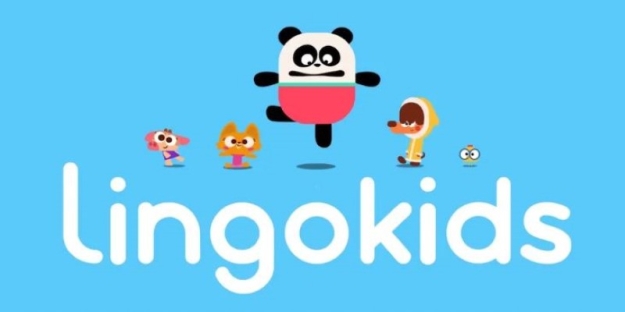Career & Education
The 10 Best Online Certifications To Boost Your Salary
1757645873000
Are you looking for ways to help your child learn a new language while keeping it fun? Kids today have access to tools that make learning feel more like play than schoolwork.
Are you looking for ways to help your child learn a new language while keeping it fun? Kids today have access to tools that make learning feel more like play than schoolwork. Here’s a look at the best language learning apps for kids that combine education, engagement, and entertainment.
Duolingo has become a household name, and its version for children takes the same playful approach. The app uses colorful animations, simple challenges, and rewards to keep kids engaged. Lessons are short, making it easy to fit in just a few minutes each day.
Children can start with basics like numbers, animals, or greetings before moving to sentences. Parents also appreciate the progress tracking, which gives a quick view of how much their child is learning. Many families use it as a warm-up before homework, making language learning part of the daily routine.
Lingokids blends language learning with broader educational themes. It offers activities in listening, speaking, reading, and even early STEM concepts—all in English and Spanish.

Its “playlearning” model keeps lessons lighthearted through games, songs, and stories. Kids can sing along, solve puzzles, and interact with characters who guide them through each task. With offline access, it’s also a good travel companion for families on the go. Parents often like that Lingokids includes real-life topics—such as healthy eating or caring for pets—so children learn both vocabulary and practical life skills.
Mondly Kids is designed with a focus on conversation. The app uses fun, cartoon-like characters to simulate real-life situations. Children can practice ordering food in a restaurant, asking for directions, or talking about hobbies.
The app supports more than 30 languages, making it a great option for families outside English-speaking countries. Its gamified approach—with rewards and badges—helps children stay motivated as they progress through different levels. For multilingual households, Mondly is useful for introducing more than one language without switching platforms.
Babbel, known for adult learners, has been testing its kids' version and plans to roll it out more widely by 2025. Unlike some apps that focus heavily on vocabulary drills, Babbel emphasizes practical conversation skills from the beginning.
Children learn through short stories, dialogues, and role-playing exercises. The interface is simple, making it easy for younger learners to use independently. Parents who already use Babbel can sync progress and encourage family learning. Families who like learning side by side—parent with Babbel, child with Babbel Kids—will find this app especially appealing.
From the creators of Endless Alphabet, this app takes a visual, playful route. It teaches Spanish through interactive word puzzles, animations, and storytelling. While it starts with vocabulary, it gradually introduces sentence-building.
The quirky monster characters make lessons entertaining, and kids often feel like they are playing a game rather than studying. The developers continue to expand into new languages, making it a solid choice for early learners. This app is especially helpful for children who learn best through visual memory rather than text-based drills.
Rosetta Stone’s kids’ app focuses on building language skills through phonics and letter recognition. It’s especially useful for younger children who are just starting to read in their first language but want an introduction to another.
Through songs, rhymes, and interactive exercises, kids develop a natural ear for sounds in both English and the target language. It’s not as flashy as some competitors, but parents value its structured and research-backed approach. Teachers in early education classrooms also recommend it as a supplemental tool for bilingual beginners.
This app is perfect for preschool and early elementary learners. Gus, a friendly owl, guides children through lessons in more than 30 languages, including less common ones like Hebrew, Croatian, and Cantonese.
Each lesson ends with games that reinforce vocabulary. Kids often forget they are “studying” as they race cars, pop balloons, or match words to pictures. The simplicity of design makes it ideal for younger users who may find larger apps overwhelming. Parents like that it doesn’t overstimulate with too many graphics or sounds, making it a calmer option for short study sessions.
Memrise has been popular with adults for years, and in 2025, it rolled out an upgraded kid-friendly mode. It combines video clips of real native speakers with interactive challenges.

This exposure to authentic accents helps kids develop strong listening skills early. Parents like that Memrise introduces cultural notes alongside words and phrases, encouraging kids to understand not just how to say something, but why it matters in daily life. For children who already have some background in a language, Memrise is especially effective for improving pronunciation and comprehension.
Pili Pop focuses on oral practice. Instead of just tapping or dragging, children speak into the app to practice pronunciation. The speech recognition system then provides instant feedback.
The app currently supports English, Spanish, and French. It encourages daily practice by offering new challenges regularly, which prevents kids from losing interest. For parents who want their child to build confidence in speaking rather than just memorizing, Pili Pop is a strong option. It’s particularly useful for kids who are shy in real-life classrooms but can build courage through private practice.
Droplets is part of the popular Drops app family but is designed specifically for children. Its lessons are short—just five minutes a day—and built around playful, image-heavy vocabulary practice.
The app supports over 35 languages, including Japanese, Korean, and Hawaiian. The visual design is bold and appealing, making it especially engaging for kids who respond better to pictures than text-heavy formats. Parents who value screen-time limits appreciate that the app’s quick sessions are effective without requiring long hours of use.
The best language learning app is the one a child enjoys and sticks with. Parents may need to try two or three to see which approach resonates. Some kids love story-based apps, while others prefer quick games or speaking challenges.
Using these apps alongside real-life practice—like reading children’s books in the new language or watching cartoons with subtitles—can make the experience even richer. The goal is not just vocabulary, but sparking curiosity about cultures and communication.
Do you like this article?
Career & Education
1757645873000
Mother & baby
1757645852000
Career & Education
1757645874000
Career & Education
1757645873000
Fashion
1757645952000
Career & Education
1757645873000
Career & Education
1757645874000
General Finance
1757645995000
Mother & baby
1757645852000
General Finance
1757645995000









